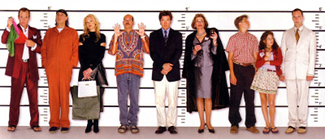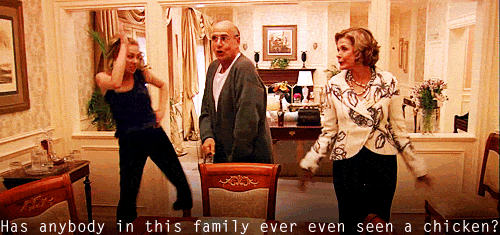
Upon scrolling through Netflix’s recommended section, I was repeatedly receiving Arrested Development as a suggestion. I had always heard great things about the original series…it was popular while I was in high school but I never got around to watching it. There is no question, now that I have viewed the series in its entirety that I don’t agree with the small masses that make up the cult following of the show. This entry though is specifically about season four. The “Netflix season” if you will. This season is also something that I had heard about …however nothing really good. At first, I must admit, I was in the same camp. The sets were slightly awkward as the show had been off the air for seven years. The dialogue was slightly off as if the writers and the actors took a bit to adjust back into their character’s grooves despite Mitchell Hurwitz (most recently he produced Lady Dynamite which you NEED TO SEE) returning to help co-write a majority of the episodes.
After tearing through the first three seasons in two weeks, I was hesitant after three or four episodes of season four. However, I couldn’t not finish it after all the time I had already invested. So, I soldiered onward and found that I ended it with a new found appreciation.
The Netflix season is structured differently than that of the original run. While there is still the premise of a show being shot about the family (complete with Ron Howard’s narration and the characters being aware of the cameras) there is one central storyline that unfolds and we see each character’s perspective; their side of the events. This creates a very interesting theme set around how each of their actions has impacts, sometimes unknown, on other people’s part in the story. It showed the interworkings of this family whom we have come to hold dear for reasons unexplainable. They are, after all, lying, cheating, connivers. What makes this way of storytelling even more interesting is that there are so many players involved and because of that so many avenues to explore. Including George Sr.’s twin there are 10 members of the Bluth family.
Picking up the storyline where it was left, we dive into the whole family being held in a police station after the events of season three’s finale. Lucille had tried to steal the Queen Mary, George Sr. had just been cleared of treason charges, Michael and George Michael had returned from their once again failed attempt to leave the family to their troubles, and many other pieces of the puzzle. Without explaining all of them: know that they were all there at this station. We bounce back and forth between the events here in the station and what comes after them with the understanding that it has been five years (not seven) in Bluth reality.
The through line slowly unfolds like like a bloom in the spring and each episode is labeled/assigned to a specific character. In doing this, you know that most of the episode is going to be dedicated to that character and the small degrees of separation between each person’s tale. It really becomes fascinating how something you do, it might be something small and insignificant to you, might effect someone else in a big way. It also serves to illustrate the seemingly isolated lives these characters live in that their actions so immediately impact each other. This way of unfolding highlights a couple of other points as well: those who don’t seem to have too much overlay (ex. Buster and George Michael) are brought together in the culminating scene of the tale (the night of Cinco de Quatro), and, while it is always insisted that “family is first” by the Bluths, each is in their own little world. While this is a fact we already knew from the original run, this sort of individual attention of their lives seems to showcase it even more.
Outside of the interesting approach to storytelling, the reoccuring guests that appear over the course of the season really help give it a new feel despite old events occasionally being brought back up. There are familiar faces: Henry Winkler reprises his role as the Bluth family lawyer and is as incompetent ever, Gene Parmesan played by Martin Mull (the scenes where Lucille is surprised by his appearances make the whole show for me), and Kitty Sanchez the stage five clinger played to perfection by Judy Greer, and Liza Minnelli as the most unlucky neighbor Lucille 2. Then there are newcomers that bring even more charm and crazy to the table: Terry Crews as Herbert Love running for a seat in the House and Isla Fisher as Rebel Alley (an illegitimate daughter of Ron Howard). ![]()
All of these elements: the story and how it unfolds, the characters new and old, and the awkwardness of the show in general made for what I found to be an enjoyable conclusion to our window into the lives of the Bluths. Again, all that being said, I totally understand where all the hate came from in reviews. I was really happy that I saw it through and didn’t give up.
What I take away from this experience is that even though Netflix Netflixed the season (made it shinier and a bit off), it worked. Now if only the same could be said for season two of Kimmy Schmidt.

